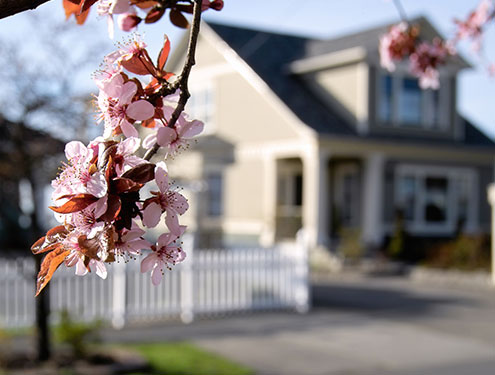Every backyard dream starts with a fence. Inching closer to reality often means wrangling a fence building permit. Many property owners scratch their heads at the rules or paperwork. Here’s how to make sense of the fence building permit process, without making your eyes glaze over.
Contents
- 1 What Is a Fence Building Permit?
- 2 When a Fence Building Permit Is Required
- 3 Commercial and Residential Fence Building Permit Differences
- 4 Steps to Apply for a Fence Building Permit
- 5 Materials and Specifics That Impact Your Permit
- 6 What Delays a Fence Building Permit?
- 7 Why Permits Matter for Safety and Value
- 8 Risks of Ignoring the Fence Building Permit
- 9 Hurricane Fence: Real Permitting Solutions
- 10 Local Rule Variations
- 11 Your Fence Project, Start to Finish
- 12 Conclusion
- 13 Permit Peace of Mind Starts Here
What Is a Fence Building Permit?
A fence building permit is written approval from your local government, needed before breaking ground on many fencing projects. It spells out details such as who, what, where, and how tall your fence will be. This paperwork keeps everyone, from neighbors to city planners, on the same page. Skipping the permit could mean fines or having to tear down fresh posts.
When a Fence Building Permit Is Required
Several factors determine when a fence building permit is needed, each woven into your city or county's specific rules. Common conditions include:
- Zone Type: Commercial zones nearly always require strict permitting. Residential neighborhoods often call for review too, especially near sidewalks, intersections, or water.
- Height Matters: Many municipalities require a fence building permit for any fence over 6 feet. Lower boundaries might slide under the radar, but always check before assuming.
- Material: Fence types such as solid wood, metal, or masonry typically need review. Transparent materials like chain link sometimes get easier passage, but you should confirm with your local rules.
- HOA Approval: Homeowners associations may tack on requirements, like matching the neighborhood’s color or style.
Uncertainty is common, so start by checking your city or county website, or reach out to your local building department for clarification. Avoiding mistakes here can prevent costly issues.
Commercial and Residential Fence Building Permit Differences
Fence building permit rules are different depending on the property type.
Commercial sites must often provide a thorough site plan, detailed specifications for security fencing, and documentation that the design will not endanger pedestrians or block sight lines. Fences in business districts are usually restricted to six or seven feet, with requests for taller boundaries requiring a special variance, which can mean additional paperwork and waiting.
Residential fence building permits sometimes feel like a game of hopscotch. HOAs tend to favor “natural-looking” fences, so wood or neutral-colored aluminum may breeze through the process. More distinctive fences or those over six feet often take longer for approval. Matching neighborhood styles typically helps speed things along. Learn more about these differences with Hurricane Fence’s residential fencing insights.
Steps to Apply for a Fence Building Permit
Navigating a fence building permit starts with homework. Most local governments offer online forms or printable applications, making life a little easier. Typical steps include:
- Find the Correct Form: County or city websites provide downloadable applications.
- Prepare Plans: Draw a site layout marking property lines, proposed fence location, and gate placements.
- Provide Specs: Include material, style, and desired height.
- Pay Fees: Application fees vary, and most require payment up front.
- Send Everything In: Submit online or by email. Some offices still accept paper copies if you prefer a face-to-face meeting.
Materials and Specifics That Impact Your Permit
Officials want to see all pertinent facts before approving your fence building permit. Layout, sidewalk proximity, gate arrangements, corner lot locations, and even fence transparency play a role. For example, chain link fences near intersections might need a sight line study so drivers can see clearly. Municipalities also want to be sure your fence will not block emergency access or block rain runoff.
Tall masonry fences and intricate metal barriers might lead to more scrutiny. Simple wooden or standard wire fences are often approved more quickly. Keeping your documentation thorough and clear helps prevent delays.
What Delays a Fence Building Permit?
Plenty of projects hit bumps that slow down the fence building permit. Common pitfalls include outdated site plans, overlooked utility or drainage easements, and missing HOA paperwork.
Why Permits Matter for Safety and Value
Permit requirements sometimes aggravate homeowners. After all, you want to fence your own yard. However, a fence building permit helps keep communities safe and property values consistent. Visualize a street with irregular fences and mismatched styles; values could shift and neighborly harmony might disappear.
Handled properly, the fence building permit is a safeguard for reasonable aesthetics and access. It maintains good vibes among neighbors and in the local market. Hurricane Fence has spent years guiding clients through permitting hurdles. Discover our approach at our company background page.
Risks of Ignoring the Fence Building Permit
Skipping a fence building permit can transform a simple project into a complex, costly situation. Municipalities can issue fines, halt work, or demand complete removal, even after the fence is finished. Reselling a property gets tough, since unapproved fencing usually needs to be disclosed, which slows down financing and closings. Legal worries may also arise if neighbors feel property lines, views, or safety are threatened.
A fence building permit feels tedious, but it is the route to a headache-free result. Correct paperwork up front keeps your investment protected and the process smooth.
Hurricane Fence: Real Permitting Solutions
Experience makes all the difference. Hurricane Fence has helped property owners through quick permits and tough HOA processes. Take one Portsmouth client, for example, whose permit languished for weeks until our seasoned team gave the city a nudge. The fence was up before they knew it, hassle barely noticed. Another project sidestepped a delay by revising site plans to meet stormwater rules.
Choosing Hurricane Fence for your fence building permit means practical guidance, prompt approvals, and fewer surprises. We work with local offices and HOAs every week, saving our clients time and trouble.
Local Rule Variations
Portsmouth’s rules are not identical to Norfolk’s, and Richmond has its own quirks. Beach towns watch for wind resilience and flood controls, while cities care about utility lines and walkways. Hurricane Fence tailors every fence building permit plan to the specifics of your locality.
Your Fence Project, Start to Finish
After the paperwork is finished, the real fun starts. Installing a fence can enhance outdoor living, add curb appeal, or create a safe area for pets or kids. Hurricane Fence recommends styles and solutions that work well for your home while breezing through permitting. Our installations are practical, attractive, and fully compliant, ensuring long-term satisfaction.
Conclusion
A fence building permit is the first step to adding a lasting upgrade to your property. Hurricane Fence guides you through every requirement, so the project fits local codes, looks great, and performs reliably. Smart preparation makes home improvement that much easier.
Permit Peace of Mind Starts Here
Don’t worry about fence building permit headaches. Reach out to Hurricane Fence and let us simplify the process, so you stay stress-free and your fence stands strong from day one.



